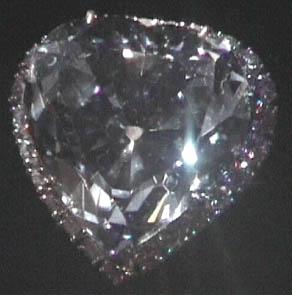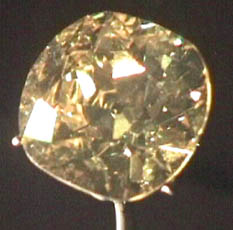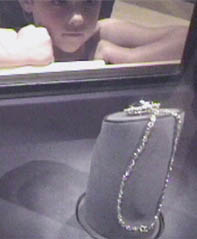Diamond
Diamond is a crystalline form of carbon which has a density of has a density of 3.51 gm/cm3 compared to 2.26 gm/cm3 in the graphite form. Imperfectly formed crystalline forms of diamond are called bort and black diamond. They are slightly less dense than diamond and are somewhat tougher and harder. They are used for diamond drills and abrasives.
While diamond is the hardest substance, rating a 10 on the hardness scale, several carbon compounds called carbides rival its hardness. Boron carbide, B4C, is the hardest next to diamond but several of the metal carbides are extremely hard and find application as cutting edges on high speed tools.
The extraordinary "fire" of a diamond gem is partly attributable to it's high index of refraction, which at n=2.417 is higher than any common mineral except zircon.

|
This crystalline form is called the "diamond lattice", and it occurs in other substances (e.g., silicon). It is a structure which Ashcroft and Mermin call "two interpenetrating face-centered cubic" primitive lattices. The lines between carbon atoms in the lattice illustration indicate nearest-neighbor bonds. |
 |
Diamond on display in the Smithsonian Museum of Natural History. The major sources of diamonds are the Republic of South Africa and Tanzania. |
 |
Yellow diamond on display in the Smithsonian Museum of Natural History. |
 |
The Hope Diamond on display in the Smithsonian Museum of Natural History.  |
| Minerals |
| Measuring in carats |
References
Kittel
Ashcroft & Mermin
| HyperPhysics*****Geophysics | R Nave |